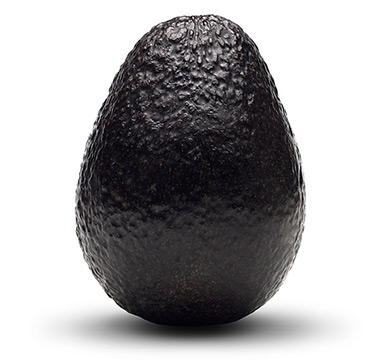Study Overview
The pilot study was conducted at Loma Linda University, and funded by the Hass Avocado Board (HAB), was published in the November 2013 issue of Nutrition Journal1. This randomized crossover feeding study on 26 healthy, overweight adults, evaluated the effects of incorporating fresh Hass avocado to a lunch—either by replacing other foods or by simply adding it to the meal—on satiety, blood sugar and insulin response and subsequent food intake.
Published: Nutrition Journal
Study funded by Hass Avocado Board
Category: Type 2 Diabetes, Weight Management
Download Scientific Summary PDF
View Press Release
See Published Study
Key Takeaways and Findings:
The subjects reported a reduced desire to eat following the avocado added lunch compared to eating the meal with no avocado.
Adding one-half of an avocado to the meal increased satisfaction following the meal compared to eating the meal with no avocado.
Despite the extra calories and carbohydrates provided by the added avocado there was no increase in blood sugar levels beyond what was observed after eating the lunch with no avocado.
The rise in insulin 30 minutes following the start of the meal was weakened when the avocado replacing lunch was eaten compared to eating the meal with no avocado.
Method:
Participants ate the same standardized breakfast followed by three different lunch meals on three different days.
- The standard (control) lunch did not contain avocado and was designed to meet individual meal-based calorie and macronutrient needs. It included a salad with Italian dressing, a baguette and cookies.
- The avocado replacing lunch was the same standard lunch that included approximately one-half of a fresh avocado served in place of part of the Italian dressing and cookies. This meal had the same total energy and macronutrient content as the standard lunch.
- The avocado added lunch was the same standard lunch with approximately one-half of a fresh avocado added. This meal had a higher total of calories and macronutrients.
A dinner buffet was provided for study participants to consume ad libitum on each of the 3 study days and was served 5 hours from the start of the lunch meal.

Findings:
Results showed that when approximately one-half of a fresh avocado was added to a lunch consisting of a salad with Italian dressing, a baguette, and cookies, participants felt more satisfied, and had less desire to eat following the meal. The patients also had a lower immediate rise in insulin levels than when the same lunch was eaten without the avocado; however, over a three-hour period there was no significant difference in insulin levels. The blunted rise in post-meal insulin levels was also observed when participants replaced part of the Italian dressing and cookies in the lunch for one-half of an avocado, compared to when they ate the same lunch with no avocado.
Conclusion:
- The conclusions drawn from this study cannot be applied to the general public due to the study size and limitations noted by the researchers. More research is needed to investigate avocados’ effect on glucose homeostasis.
- The researchers concluded that the reduction in the rise in insulin levels observed with the avocado replacing part of the Italian dressing and cookies lunch is worthy of future exploration in persons with insulin resistance (e.g. metabolic syndrome) and type 2 diabetes to determine if eating avocados can favorably influence glucose homeostasis.
- The results provide promising clues and a basis for future research to determine avocados’ effect on satiety and glucose and insulin response.

Hass Avocado Board Supports Nutrition Research
The Hass Avocado Board (HAB) is a promotion, research and information organization under supervision of the United States Department of Agriculture. HAB has a science research pipeline of ongoing clinical studies investigating the relationship between fresh avocado consumption and weight management and risk factors for cardiovascular disease and diabetes. And, based on their nutrition and phytochemical components, emerging research suggests that avocados may play benefit many emerging areas, including skin, eye, joint and cellular health.
Reference:
1. Wien M, Haddad E, Oda K, Sabaté J. A randomized 3×3 crossover study to evaluate the effect of Hass avocado intake on post-ingestive satiety, glucose and insulin levels, and subsequent energy intake in overweight adults. Nutrition Journal 2013, 12: 155.





